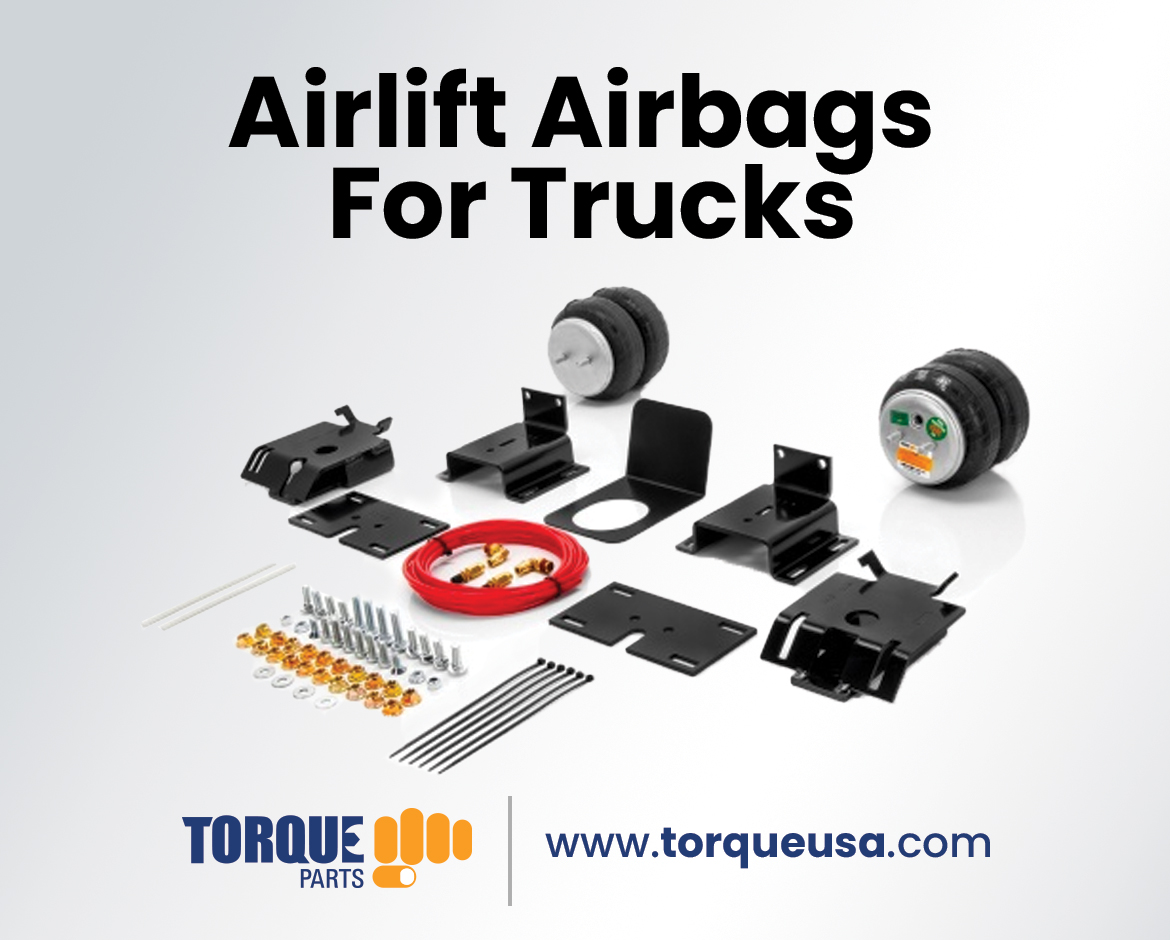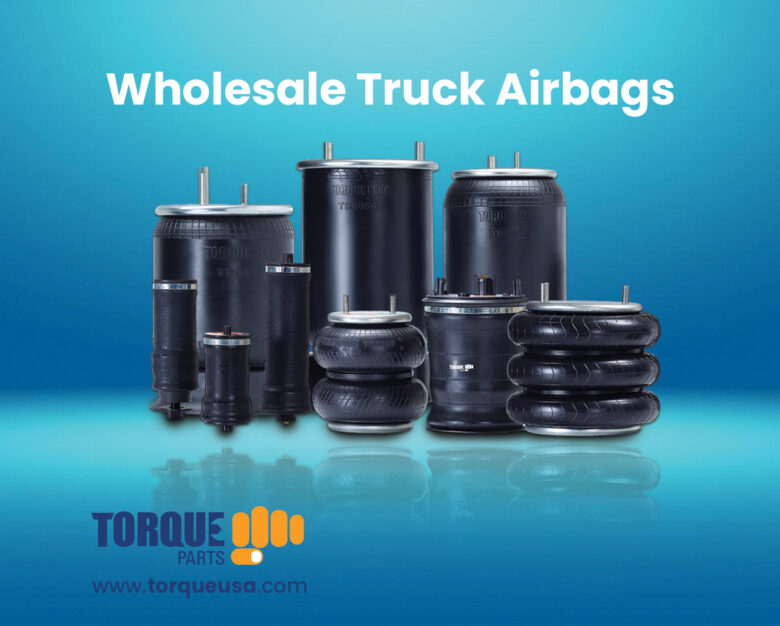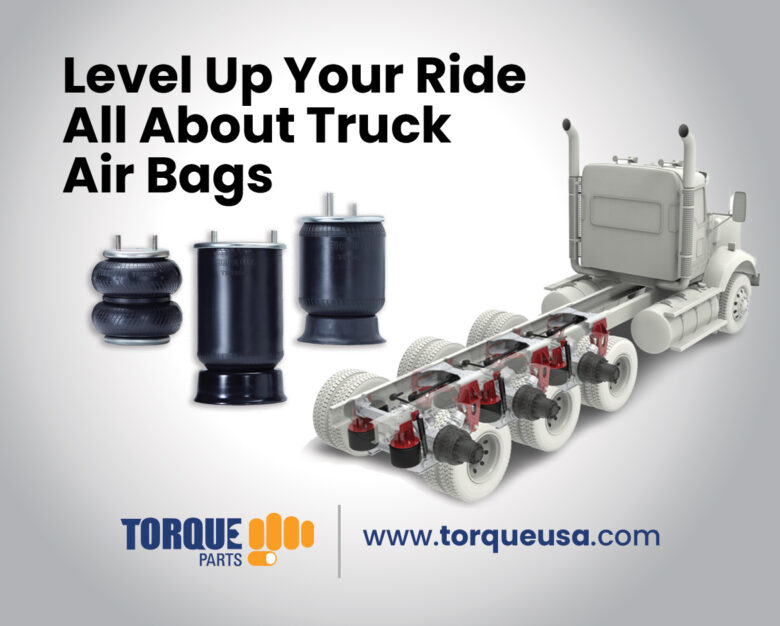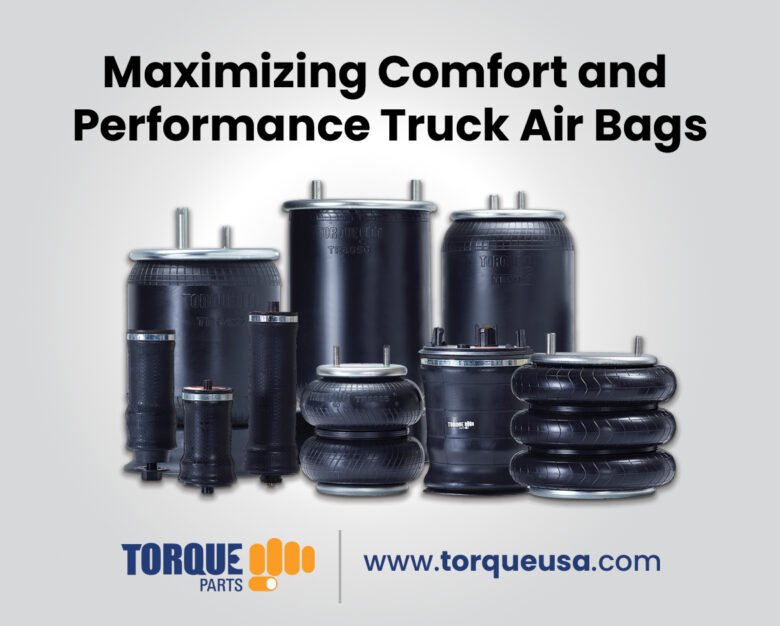
Maximize Your Truck’s Potential A Comprehensive Guide to Airlift Airbags
Introduction to Airlift Airbags for Trucks
Trucks are versatile workhorses, capable of hauling heavy loads and traversing rugged terrain. However, maintaining stability and ride quality can be a challenge, especially when carrying substantial payloads. This is where airlift airbags come into play.
Airlift airbags are specialized suspension components designed to provide additional support and adjustability to truck suspensions. Unlike traditional springs, which can become strained under heavy loads, airlift airbags offer a dynamic solution that enhances both performance and safety.
By installing airlift airbags, truck owners can achieve a level stance and prevent sagging, even when carrying heavy cargo or towing trailers. This not only improves handling and stability but also reduces the risk of bottoming out and excessive wear on tires and other suspension components.
Furthermore, airlift airbags are adjustable, allowing users to fine-tune their truck’s suspension to suit varying load conditions. Whether hauling construction materials, towing recreational equipment, or simply carrying a full load of passengers, airlift airbags enable precise control over ride height and firmness.
In the following chapters, we will delve deeper into the mechanics, benefits, installation process, and maintenance of airlift airbags. By the end of this guide, you’ll have a comprehensive understanding of how airlift airbags can transform your trucking experience, ensuring a smoother, safer, and more enjoyable ride, regardless of the load you’re carrying.
How Airlift Airbags Work
Airlift airbags revolutionize the way trucks handle heavy loads by leveraging innovative engineering principles. Understanding how these airbags function is crucial for appreciating their benefits fully.
At the core of airlift airbag systems are robust, reinforced rubber or synthetic polymer bags. These bags are strategically placed within the truck’s suspension system, typically between the frame and the axle. When the vehicle is loaded or towing, the weight compresses the suspension, causing the airbags to inflate automatically.
As the airbags inflate, they counteract the downward force exerted by the load, effectively leveling the truck and restoring it to its optimal ride height. This not only prevents sagging but also maintains proper alignment and geometry, enhancing stability and control.
The inflation of airlift airbags is regulated by a compressor and air lines connected to onboard controls. This allows for precise adjustment of air pressure within the airbags, enabling users to customize the suspension to accommodate different loads and road conditions.
One of the key advantages of airlift airbags is their ability to distribute weight evenly across all four corners of the vehicle. This minimizes body roll and sway, improving handling and cornering stability, especially when navigating challenging terrain or sharp turns.
Moreover, airlift airbags work seamlessly with existing suspension components, complementing rather than replacing them. This ensures compatibility with a wide range of trucks and makes installation relatively straightforward.
In the subsequent chapters, we’ll explore the numerous benefits of airlift airbags in greater detail, from enhanced towing capabilities to improved ride comfort. By the end of this guide, you’ll have a comprehensive understanding of how airlift airbags can elevate your trucking experience to new heights.
Benefits of Airlift Airbags
Airlift airbags offer a multitude of advantages for truck owners, making them an indispensable upgrade for anyone seeking to maximize their vehicle’s performance and versatility. Let’s delve into the various benefits that airlift airbags bring to the table:
Enhanced Towing Capabilities
Airlift airbags provide additional support to the rear suspension when towing heavy trailers or hauling large payloads. By reducing sag and maintaining proper ride height, airlift airbags improve towing stability and control, ensuring a safer and more comfortable towing experience.
Improved Handling and Stability
With airlift airbags, trucks exhibit reduced body roll, sway, and pitch, especially when navigating uneven terrain or sharp curves. The added support from the airbags enhances overall stability and control, allowing for more confident driving and better handling under challenging conditions.
Extended Tire Life
By preventing excessive squatting and uneven tire wear, airlift airbags help extend the lifespan of tires. By maintaining proper alignment and distributing weight evenly across all four tires, airlift airbags mitigate premature tire wear, saving truck owners money on replacement tires over time.
Reduced Bottoming Out
Airlift airbags act as a cushion between the frame and axle, absorbing shocks and preventing the truck from bottoming out, even when carrying heavy loads or traversing rough terrain. This not only enhances ride comfort but also protects the truck’s suspension components from excessive wear and damage.
Customizable Suspension
With adjustable air pressure settings, airlift airbags allow truck owners to fine-tune their vehicle’s suspension to suit specific load requirements and driving conditions. Whether hauling heavy cargo or cruising empty, users can easily adjust the airbags to achieve optimal ride quality and performance.
In summary, airlift airbags offer a host of benefits, including enhanced towing capabilities, improved handling and stability, extended tire life, reduced bottoming out, and customizable suspension settings. These advantages make airlift airbags a valuable investment for truck owners looking to optimize their vehicle’s performance and versatility.
Types of Airlift Airbags
Airlift airbags come in various types, each designed to cater to specific needs and preferences. Understanding the differences between these types is essential for selecting the right airbag system for your truck. Let’s explore the main types of airlift airbags:
Convoluted vs. Double Convoluted Airbags
Convoluted airbags feature a single convoluted design, resembling a bellows or accordion. They provide reliable support and are well-suited for moderate loads. On the other hand, double convoluted airbags feature an additional convoluted layer, offering increased load capacity and stability, making them ideal for heavy-duty applications.
Standard Duty vs. Heavy Duty Airbags
Standard duty airbags are designed for light to moderate loads and offer reliable support and performance for everyday driving tasks. Heavy-duty airbags, on the other hand, are built to withstand higher loads and more demanding conditions, making them suitable for commercial applications and heavy towing.
Adjustable vs. Non-adjustable Airbags
Some airlift airbags come with adjustable air pressure settings, allowing users to fine-tune their suspension to accommodate different load conditions and driving preferences. Non-adjustable airbags, on the other hand, have fixed air pressure settings and provide a simpler, more straightforward solution for basic load support needs.
By understanding the different types of airlift airbags available, truck owners can make informed decisions when selecting the right airbag system for their specific requirements. Whether prioritizing load capacity, space constraints, adjustability, or durability, there’s a suitable airlift airbag option to meet every need.
Installation Process
Installing airlift airbags on your truck is a manageable task with the right tools and guidance. In this chapter, we’ll provide a step-by-step guide to help you navigate through the installation process smoothly:
Step 1: Gather Tools and Materials
Before starting, ensure you have all the necessary tools and materials, including the airlift airbag kit, mounting brackets, air lines, fittings, and any additional hardware specified in the installation instructions.
Step 2: Prepare the Vehicle
Park the truck on a level surface and engage the parking brake. Disconnect the negative terminal of the battery to prevent accidental electrical discharge. Safely raise the rear end of the truck using jack stands or a lift, providing ample clearance to work underneath.
Step 3: Mount the Airbags
Follow the manufacturer’s instructions to mount the airbags securely between the frame and axle of the truck. Use the provided mounting brackets and hardware, ensuring proper alignment and clearance from other components.
Step 4: Install Air Lines and Fittings
Connect the air lines to the airbags and route them along the frame of the truck, securing them with zip ties or clamps to prevent interference with moving parts. Install the fittings at the desired locations, ensuring a secure and leak-free connection.
Step 5: Connect to Compressor and Controls
If your airlift airbag system includes a compressor and onboard controls, follow the manufacturer’s instructions to install and connect these components. Route the wiring harness and air lines neatly, avoiding any sharp edges or heat sources.
Step 6: Test the System
Once everything is installed, double-check all connections and fittings for tightness and proper alignment. Reconnect the battery and test the airlift airbag system by inflating and deflating the airbags using the onboard controls. Check for any air leaks or abnormalities and address them accordingly.
Step 7: Final Adjustments
Adjust the air pressure in the airbags to achieve the desired ride height and suspension firmness. Take the truck for a test drive to ensure everything is functioning correctly and to fine-tune the suspension settings as needed.
By following these steps carefully and referring to the manufacturer’s instructions, you can successfully install airlift airbags on your truck, enhancing its load-carrying capacity, stability, and overall performance.
Maintenance Tips
Maintaining airlift airbags is crucial to ensure optimal performance and longevity. In this chapter, we’ll discuss some essential maintenance tips to keep your airlift airbag system in top condition:
Regular Inspections
Inspect the airbags, air lines, fittings, and mounting brackets regularly for signs of wear, damage, or corrosion. Look for any leaks, cracks, or abrasions that could compromise the integrity of the system. Address any issues promptly to prevent further damage.
Proper Inflation
Check the air pressure in the airbags regularly using a pressure gauge. Refer to the manufacturer’s guidelines for the recommended pressure levels based on load conditions and vehicle specifications. Underinflated airbags can affect ride quality and load support, while overinflated airbags can lead to premature wear and reduced performance.
Address Leaks Promptly
If you detect any air leaks in the system, trace the source of the leak and repair it immediately. Replace damaged or worn-out air lines, fittings, or seals as needed. Ignoring air leaks can lead to loss of suspension support and compromise safety on the road.
Protect from Debris and Contaminants
Keep the airbags and components clean and free from debris, dirt, and contaminants that could cause abrasion or damage. Avoid driving in harsh environments or off-road conditions that could expose the airbag system to excessive wear and tear.
Professional Inspection
Consider having your airlift airbag system inspected by a qualified technician annually or as recommended by the manufacturer. A professional inspection can identify potential issues early and ensure that the system is functioning correctly and safely.
By following these maintenance tips and staying proactive about caring for your airlift airbag system, you can maximize its lifespan and enjoy reliable performance for years to come.
Common Issues and Troubleshooting
While airlift airbag systems are designed to provide reliable performance, occasional issues may arise that require troubleshooting. In this chapter, we’ll discuss some common issues that truck owners may encounter with airlift airbags and how to address them:
Air Leaks
One of the most common issues with airlift airbag systems is air leaks. If you notice a loss of air pressure in the airbags or hear hissing noises, there may be a leak in the air lines, fittings, or seals. Inspect the system carefully and repair or replace any damaged components to resolve the leak.
Uneven Inflation
Uneven inflation of the airbags can lead to imbalanced suspension and handling issues. Check the air pressure in each airbag to ensure they are inflated to the same level. Adjust the pressure as needed to achieve uniform inflation and proper ride height.
Suspension Sag
If your truck’s suspension sags excessively, even with the airbags inflated, there may be underlying issues with the airbag system or other suspension components. Inspect the airbags, mounting brackets, and suspension components for signs of wear or damage. Replace any worn-out or damaged parts to restore proper suspension function.
Faulty Compressor or Controls
If the compressor fails to inflate the airbags or the onboard controls malfunction, there may be issues with the compressor, wiring, or control module. Check the electrical connections and wiring harness for any damage or loose connections. Replace any faulty components to restore functionality.
Excessive Bouncing or Bottoming Out
If your truck exhibits excessive bouncing or bottoming out, the air pressure in the airbags may be too high or too low. Adjust the air pressure to achieve the optimal balance between ride comfort and load support. Additionally, inspect the suspension for worn-out shocks or other components that may contribute to the issue.
Professional Assistance
If you’re unable to resolve the issue on your own or if you’re unsure about performing troubleshooting tasks, consider seeking assistance from a qualified technician or contacting the manufacturer for support. Professional assistance can help diagnose and address more complex issues effectively.
By familiarizing yourself with these common issues and troubleshooting techniques, you can maintain your airlift airbag system in optimal condition and enjoy reliable performance on the road.
Conclusion
In conclusion, airlift airbags offer truck owners a versatile and effective solution for enhancing suspension performance, load-carrying capacity, and overall driving experience. Throughout this guide, we’ve explored the mechanics, benefits, installation process, and maintenance of airlift airbags, highlighting their importance in optimizing truck performance and versatility.
By installing airlift airbags, truck owners can enjoy enhanced towing capabilities, improved handling and stability, extended tire life, and reduced bottoming out. The ability to customize suspension settings and adjust air pressure ensures optimal ride quality and performance under varying load conditions and driving situations.
However, it’s essential to prioritize proper installation and regular maintenance to ensure the continued reliability and longevity of airlift airbag systems. By following the manufacturer’s guidelines and staying proactive about inspections, adjustments, and repairs, truck owners can maximize the lifespan and performance of their airlift airbag systems.
In summary, airlift airbags are a valuable investment for truck owners looking to unlock the full potential of their vehicles. Whether hauling heavy loads, towing trailers, or simply cruising on the open road, airlift airbags provide the support and stability needed to tackle any task with confidence and ease. Consider upgrading your truck with airlift airbags and experience the difference for yourself.
For detailed information, you can contact us at Airlift Airbags.




